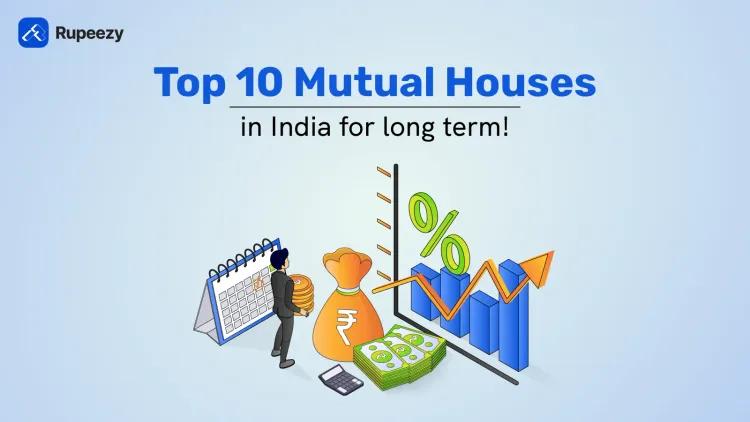Sortino Ratio vs Sharpe Ratio – Key Differences Explained


00:00 / 00:00
Who doesn’t like higher returns on their investment? Obviously, everyone does! But what if, in the chase for returns, we end up losing capital? Nobody likes that! Investors often focus on returns while overlooking the most critical factor, which is risk. When analysing funds, we sometimes struggle with complex ratios and get confused. This is where risk ratios become essential. In this article, we will explore the Sortino and Sharpe Ratios, their formulas, pros and cons, a comparison of Sortino Ratio vs Sharpe Ratio, examples, and more. Let’s keep reading to gain a deeper understanding of these risk ratios.
What is Sortino Ratio
The Sortino Ratio focuses on the downside risk of an investment. It has a slight variation from the Sharpe ratio. The ratio tells you how much return you're getting for the risk of losing money, without considering the times of investment going up. Unlike volatility, which includes both positive and negative movements, the Sortino Ratio only considers negative movements. A higher Sortino Ratio means the investment is delivering strong returns while keeping the downside risk low. We will understand this concept with the formula mentioned below:
Formula,
Sortino Ratio = (Rp - Rf) ÷ ?d?
'Rp' means historical returns or expected returns from the portfolio or fund
‘Rf’ means the risk-free rate, which can be a fixed deposit or government bond
‘?d’ means the standard deviation of the negative or downside returns from the portfolio or fund
Pros of Sortino Ratio
As we looked at the meaning and formula of the Sortino Ratio, we will look at some pros of this risk ratio:
Downside Risk: The Sortino Ratio considers negative returns in standard deviation. This makes it useful for investors who care to protect their capital from downside risks rather than fluctuations caused by upside movement.
Clarity on Risk: By excluding the upside volatility, the ratio shows a more realistic view considering the risk factor rather than factoring in the general volatility measures.
Better for Comparing Funds: It helps investors when comparing funds in the same category. If there are multiple funds with the same returns, you can make better decisions by considering the downside risks, as it highlights which fund protects better during downward market trends.
Aligned with Investor Goals: Most investors want to avoid losses, not gains. So, the Sortino ratio focuses on negative deviations from the average, which better matches with investor concerns on downside risk.
Cons of Sortino Ratio
As we looked at some of the pros of the Sortino ratio, here we will look at some downsides:
Less Commonly Reported: Many platforms and even the fund factsheets still focus on the Sharpe Ratio, making the Sortino Ratio harder to find or compare across funds, as it is not considered widely in the industry.
Ignores Positive Movement: The ratio depends only on negative deviations, and thus it does not consider the positive movement, which can aid in investment growth.
Needs More Data Required: To calculate downside deviation, you need to filter out only negative returns in the standard deviation. This can be complex and harder to gather and compute without proper tools.
Less Effective in Stable Markets: During the low-volatility periods, where downside risk is low across funds, the Sortino Ratio may not add much value insight beyond Sharpe.
What is Sharpe Ratio
The Sharpe Ratio interprets how much return an investment is giving you compared to how much total risk you’re taking. It looks at both the upside and downside fluctuations, as it includes all the volatility, whether it is upside or downside. If an investment gives high returns but moves up and down a lot, then the Sharpe Ratio might not be that impressive. But if it delivers decent returns with less movement, the ratio will be higher. A higher Sharpe Ratio means a better risk-adjusted return. Investors often use it to compare mutual funds, stocks, or portfolios to see which one is using risk more efficiently. We will understand this concept with the formula mentioned below:
Formula
Sharpe ratio = (Rp — Rf) ÷ ?p
'Rp' means historical returns or expected returns from the portfolio or fund
‘Rf’ means the risk-free rate, which can be a fixed deposit or government bond
‘?p’ is the standard deviation of the portfolio or fund
Pros of Sharpe Ratio
We will look at some of the Pros of the Sharpe Ratio:
Measuring Volatility: The Sharpe Ratio includes all kinds of volatility, whether it is positive or negative, while giving an overall view of how much risk the fund takes for each unit of return.
Easy to Analyse: The Sharpe ratio uses widely available data such as returns, standard deviation, and risk-free rate, making it simple to compute and ideal for comparing a wide range of funds.
Widely Accepted: The mutual fund houses and even in their fact sheets, fund managers and analysts often disclose Sharpe Ratios, as it’s useful when you want to evaluate or compare funds based on common benchmarks.
Better for Mature Portfolios: For long-term or well-diversified portfolios, where returns don’t fluctuate wildly, the Sharpe Ratio works well in portraying consistent risk-adjusted performance.
Cons of Sharpe Ratio
We will look at the Cons of Sharpe Ratio, and here are as following:
Penalises Upside Volatility: It treats volatility like higher-than-expected gains in the same way as downside. So, it may recognise upside movement as bad even if it is a high-growth fund, which can be a growth fund and known for big upward movements.
Misleads during Market Surge: During bull markets, the high returns can lead to high volatility, and in turn, the ratio might show a low Sharpe, showcasing that good funds look riskier than they really are.
Depends on Return Normality: The ratio assumes that returns follow a normal distribution. But real market returns often have extreme movements and can make the Sharpe ratio less reliable.
Misrepresentation by Sudden Spikes: A few extreme returns in either direction can significantly influence the standard deviation and provide a negative view of the fund’s actual performance.
5 Key Differences Between Sortino Ratio and Sharpe ratio
Here is the difference between sortino ratio and sharpe ratio:
Aspect | Sortino Ratio | Sharpe Ratio |
Risk Type | Focuses only on downside movements. | Focuses on upside as well as downside movements. |
What It Penalizes | It penalises only the negative deviations. | It penalises both upside and downside deviations. |
When to Use | Beneficial when the investor cares more about downside risks. | Beneficial when the investor needs to understand overall risk and return adjusted to it. |
Availability | Relevant data or not showcased everywhere, it is harder to find in the factsheets as well. | It is easy to find on fund sites or factsheets, as it is more relevant in the industry. |
Helpful for Cautious Investors | Better for investors who mostly want to avoid losing capital value. | Not always best for those who fear losing capital. |
How to Interpret Sortino and Sharpe Ratio?
Investors can use these ratios to check whether a mutual fund is delivering decent returns compared to the risk taken. Sharpe ratio includes the whole standard deviation (upside and downside) compared to Sortino, which considers downside deviation from the standard deviation. You can compare these ratios with funds in the same category.
High Sortino Ratio:
A high Sortino Ratio means the fund delivered strong returns while limiting downside risks. It shows the fund handled bad market days better. For example, some balanced or flexi-cap funds can show high Sortino ratios because they protect capital in falling markets while still delivering decent returns in good times. A Sortino higher than 2 is considered good.
Low Sortino Ratio:
A low Sortino Ratio means the fund may deliver returns, but it takes higher downside risk. That scenario is not better for cautious investors. A Sortino lower than 1 can suggest weak performance by the fund. For instance, some small-cap funds in India have a low Sortino even with good returns because they react a lot during market corrections, which adds downside volatility.
High Sharpe Ratio:
A high Sharpe Ratio shows the fund gave higher returns per unit of total risk. Sharpe above 1 is considered decent, more than 2 is good, and above 3 is termed excellent. It means the fund performed steadily without much wild movement. Large-cap funds or conservative hybrid funds can often show higher Sharpe values because they give stable performance over time, with lower price swings.
Low Sharpe Ratio:
A low Sharpe Ratio shows the fund took a lot of risk, but the reward is not sufficient for the risk undertaken. A sharpe ratio below 1 can portray as performance below par. This can mean unpredictable fund performance. Some thematic or sectoral funds show low Sharpe values because their returns fluctuate a lot, and the average return does not make up for the risk undertaken.
Which is Better: Sharpe Ratio or Sortino Ratio?
In the Sortino ratio vs Sharpe ratio, the risk factor is the same, but the considerations are different. While Sortino focuses on downside and Sharpe focuses on risk-adjusted returns, one might feel the latter is better.
The Sharpe Ratio is useful in most cases because a higher Sharpe ratio means the fund gives better returns for the risk taken. However, if returns rise sharply and cause more price swings, the ratio may fall, even if those swings come from gains. This makes Sharpe less reliable in high-growth scenarios. In such cases, the Sortino Ratio becomes more helpful, as it focuses only on downside risk and gives better clarity on fund risks during volatile times.
Real World Applications
Let’s say you need to choose a fund. At first, you can set a goal, like short-term, to purchase goods or foreign travel expenses, or focus on long-term goals like wealth building or retirement. The risk tolerance depends on the goal that you undertake.
Imagine you're planning for your child’s education and looking at mutual fund options. You're aiming for steady growth, but can't afford major losses along the way.
Use mutual funds or ETFs from Indian markets (you can get data from reliable sources and compare Sharpe and Sortino side by side. In the below case, you have data for two mutual funds, and we will look at how to interpret it.
Fund Name | Sortino Ratio | Sharpe Ratio | 3-Yr Return | Standard Deviation |
GPT Fund | 0.85 | 1.12 | 15.30% | 12.40% |
DRG Fund | 1.32 | 0.98 | 14.80% | 10.10% |
Interpretation:
GPT Fund has slightly higher returns but has more volatility, which means a higher Sharpe ratio. DRG Fund has lower downside volatility, giving it a stronger Sortino ratio.
For a medium-term, sensitive goal like education, Sortino matters more. So you'd lean toward DRG Fund even though it means foregoing extra returns, there is a higher risk protection.
Investor Bias on the Sortino Ratio vs Sharpe Ratio
1) Favouring Sharpe Ratio over Sortino Ratio
Let’s say you, as an investor, might think that midcap funds are great long-term bets. Usually, midcap companies start to grow exponentially during the business growth phase, so a broader investor base prefers this.
Now, for example, we will take the ABC midcap fund. During the 2022-2023 period, markets were facing massive volatility due to the Russia-Ukraine conflict and tightened monetary policy across the world.
The ABC Midcap Fund has delivered over 30% CAGR over 3 years, but has witnessed sharp drawdowns in the years in between. The Sharpe ratio might look impressive, like staying around 1.2 to 1.3 in some periods, which is a result of strong upside movements. But the Sortino ratio was much lower, like around 0.8, which reflects the fund's downside risk. Investors ignored the low Sortino ratio because they already believed this fund was a long-term investment.
The Sharpe ratio confirmed what they wanted to believe, so investors chose it while ignoring the real downside risks. Choosing the Sharpe ratio over the Sortino made it look good because it made the fund look safer than it really was.
2) Considering Sortino Ratio Over Sharpe Ratio
One of the traits that investors across the world hold is that they hate losses. So, in search of a fund that protects capital, they look into liquid or arbitrage funds. For example, the PQR fund equity arbitrage fund had very low downside risk. The Sortino ratio was high, like above 3.0. The Sharpe ratio, however, was around 1.2–1.5, since overall returns were limited. Investors focused more on the Sortino and ignored the Sharpe.
However, their portfolio was underperforming the benchmarks. Focusing only on Sortino has impacted the returns, as they feared losses, even when it meant receiving low returns.
So, while neither metric is perfect, using them together often paints a clearer picture than relying on just one.
Conclusion
As we come to a conclusion of the article, we understood both Sortino and Sharpe ratios that help investors to make informed decisions. It helps them to understand the balanced risk and return. While the Sharpe ratio provides a broad view by considering all volatility, the Sortino ratio cuts down and focuses only on downside risk, which is helpful for some investors. Neither ratio is perfect on its own, but using them together can offer a better picture of a fund’s actual performance. Investors should make decisions depending on their goals and risk tolerance, and one may suit you better than the other. Consult a financial advisor before investing.
FAQs:
Q1. Sharpe ratio should be high or low?
A high Sharpe Ratio is preferred, and over 2 and 3 is considered excellent, as it indicates better risk-adjusted returns.
Q2. What is a good Sharpe Ratio?
A Sharpe Ratio above 1 is decent, above 2 is good, and above 3 is excellent.
Q3. What is a good Sortino Ratio?
A Sortino Ratio above 2 is considered strong, showing good returns with low downside risk.
Q4. How to calculate the Sortino Ratio?
Sortino Ratio = (Portfolio Return ? Risk-Free Rate) ÷ Downside Deviation.
Q5. How to calculate the Sharpe Ratio?
Sharpe Ratio = (Portfolio Return ? Risk-Free Rate) ÷ Total Standard Deviation.
Q6. Which ratio do professional investors or fund managers prefer?
Most professionals prefer the Sharpe Ratio, as it’s widely used and easy to find in fund fact sheets.
Q7. Can I use the Sortino and Sharpe Ratios for mutual fund scheme selection?
Yes, using both ratios together helps analyse mutual funds more accurately by balancing return and risk.
Check Out These Related Articles |
The content on this blog is for educational purposes only and should not be considered investment advice. While we strive for accuracy, some information may contain errors or delays in updates.
Mentions of stocks or investment products are solely for informational purposes and do not constitute recommendations. Investors should conduct their own research before making any decisions.
Investing in financial markets are subject to market risks, and past performance does not guarantee future results. It is advisable to consult a qualified financial professional, review official documents, and verify information independently before making investment decisions.

All Category









